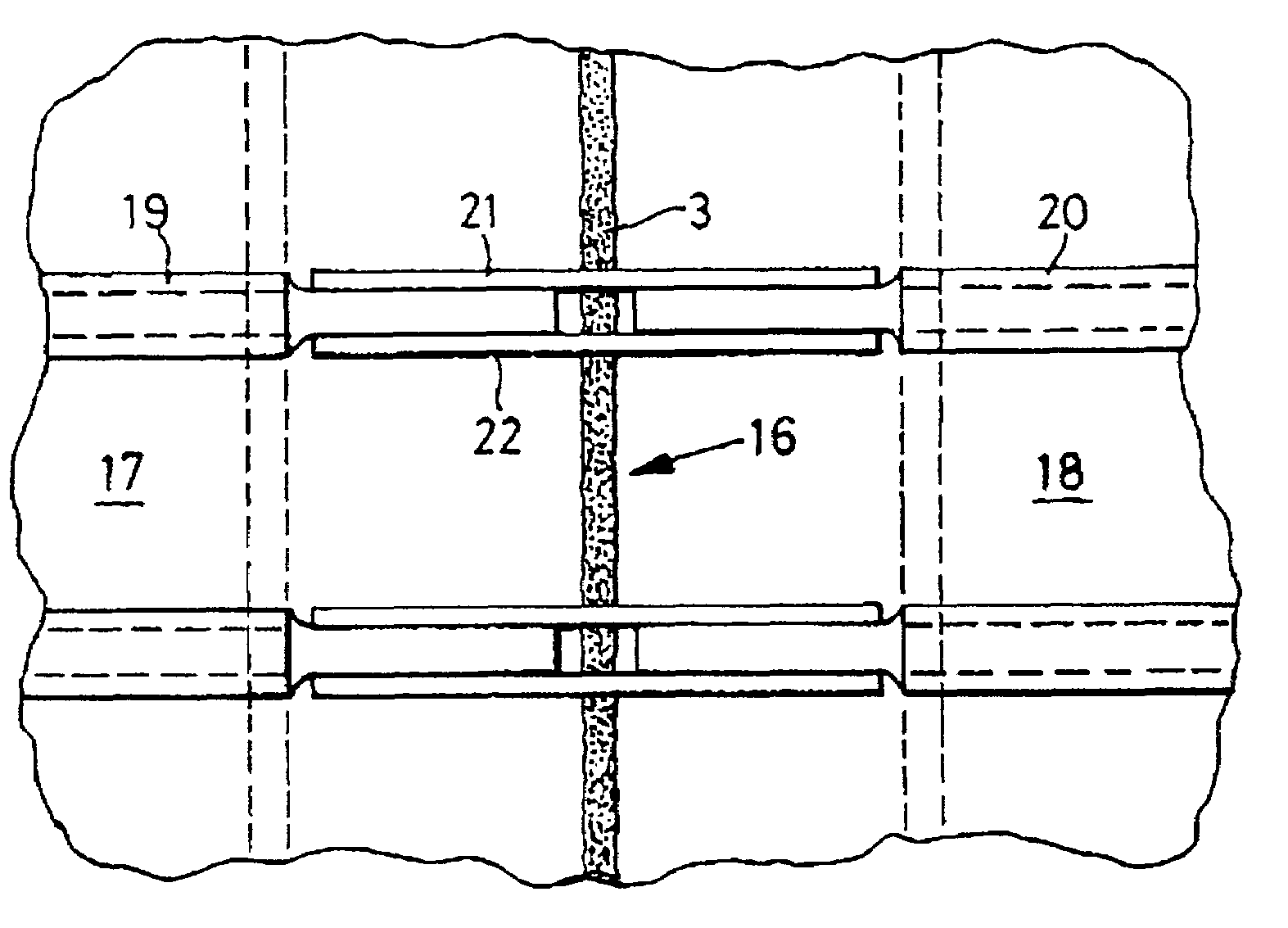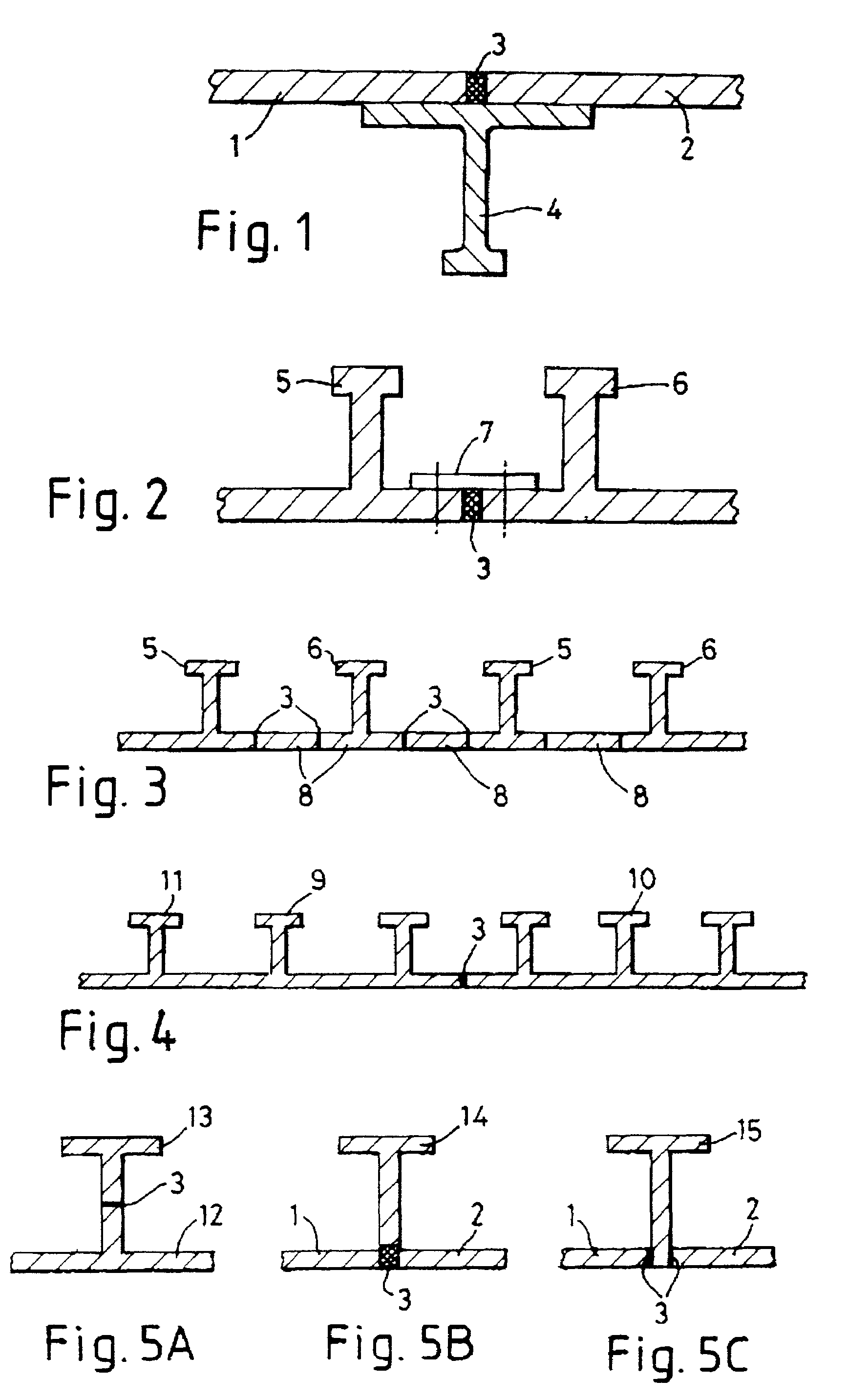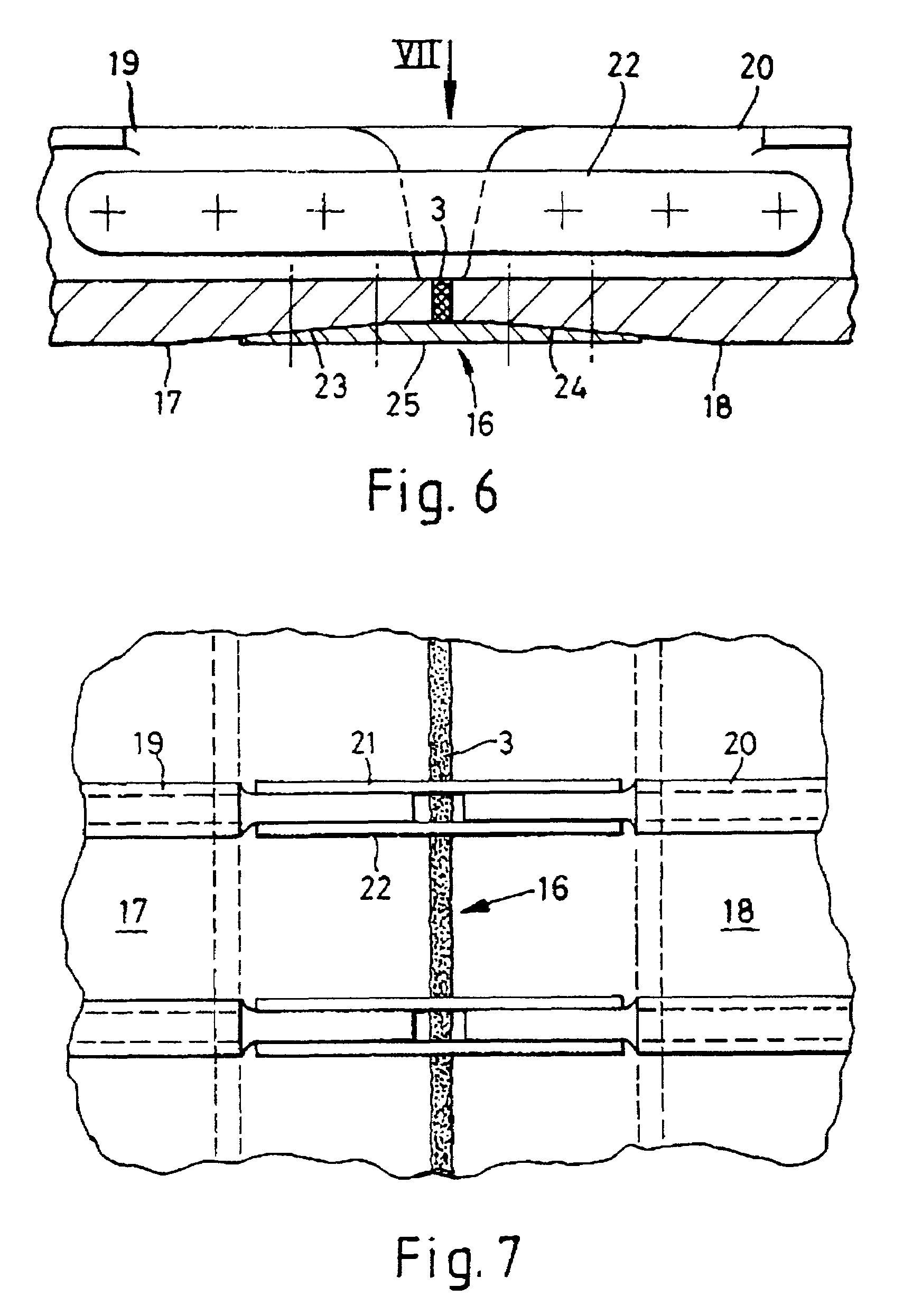Friction welding metal components
a technology of metal components and friction welding, which is applied in the direction of welding/soldering/cutting articles, non-electric welding apparatuses, wings, etc., can solve the problems of limited current design possibilities, manufacturing capabilities, and inherently complex design of airframe structural components
- Summary
- Abstract
- Description
- Claims
- Application Information
AI Technical Summary
Benefits of technology
Problems solved by technology
Method used
Image
Examples
Embodiment Construction
[0077]FIG. 1 shows skin panels 1, 2 friction stir butt welded together at 3 and having a stringer 4 bolted to the skin panels 1, 2 either side of the weld 3. A secondary load path is thus provided and the need for a butt strap removed.
[0078]In FIGS. 2, 3 and 4 alternative structural assemblies for a wing skin or fuselage skin stiffened assembly are shown. Extruded panel stiffener members 5, 6 in FIG. 2 are shown friction stir butt welded together at 3 with a butt strap 7 bolted in position to members 5 and 6 either side of the weld 3. Again by this means it will be seen that a secondary load path is provided.
[0079]In FIG. 3 an arrangement similar to that of FIG. 2 includes intermediate skin portions 8 interposed between members 5 and 6 and friction stir butt welded in position with welds 3. Once again members 5,6 are extruded sections.
[0080]In FIG. 4 extruded sections 9, 10 are much wider and each include a number of stiffening portions 11 but are similarly friction stir butt welded...
PUM
| Property | Measurement | Unit |
|---|---|---|
| thicknesses | aaaaa | aaaaa |
| aerodynamic profile | aaaaa | aaaaa |
| thickness | aaaaa | aaaaa |
Abstract
Description
Claims
Application Information
 Login to View More
Login to View More - R&D
- Intellectual Property
- Life Sciences
- Materials
- Tech Scout
- Unparalleled Data Quality
- Higher Quality Content
- 60% Fewer Hallucinations
Browse by: Latest US Patents, China's latest patents, Technical Efficacy Thesaurus, Application Domain, Technology Topic, Popular Technical Reports.
© 2025 PatSnap. All rights reserved.Legal|Privacy policy|Modern Slavery Act Transparency Statement|Sitemap|About US| Contact US: help@patsnap.com



